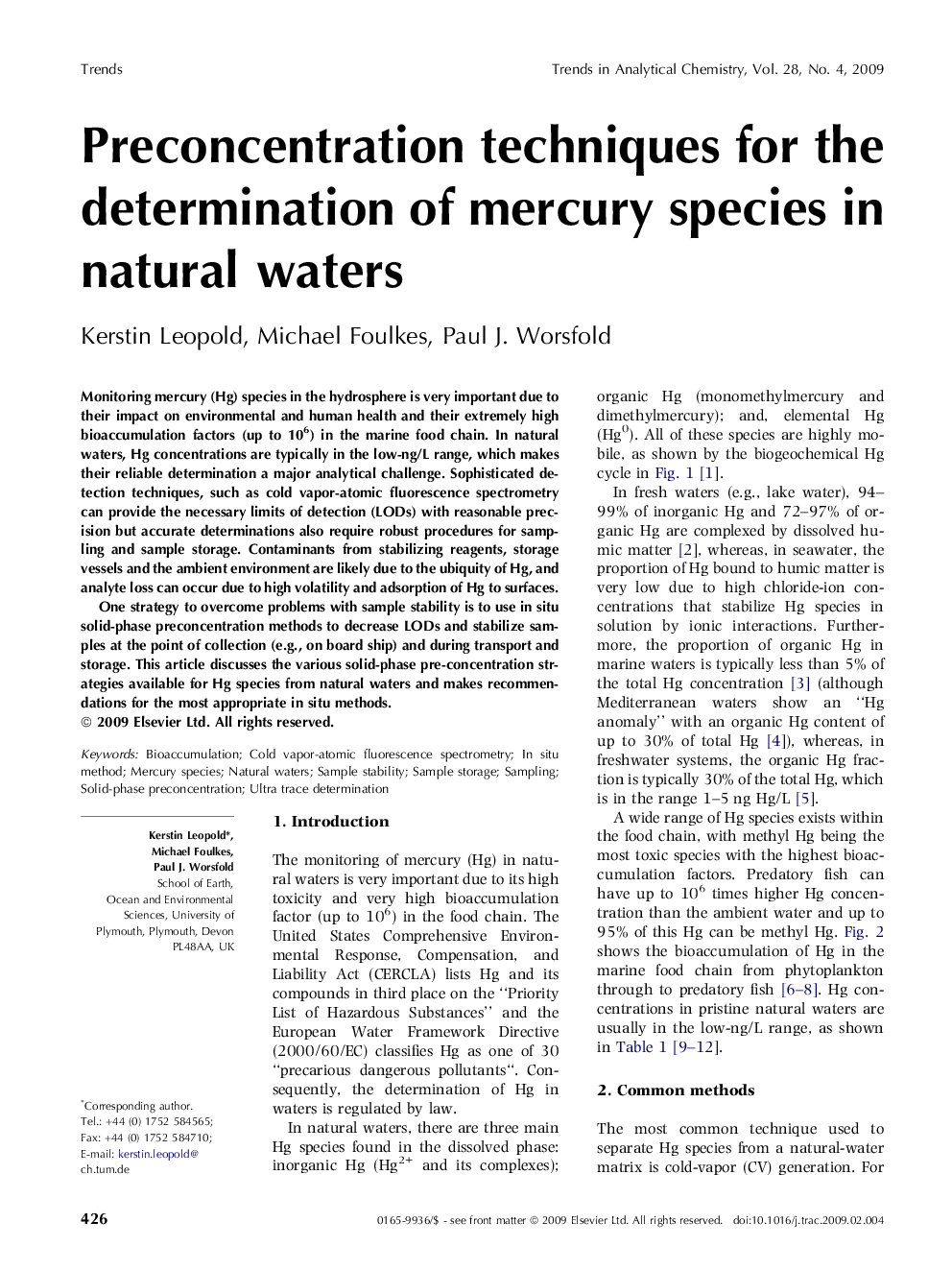| Article ID | Journal | Published Year | Pages | File Type |
|---|---|---|---|---|
| 1248400 | TrAC Trends in Analytical Chemistry | 2009 | 10 Pages |
Monitoring mercury (Hg) species in the hydrosphere is very important due to their impact on environmental and human health and their extremely high bioaccumulation factors (up to 106) in the marine food chain. In natural waters, Hg concentrations are typically in the low-ng/L range, which makes their reliable determination a major analytical challenge. Sophisticated detection techniques, such as cold vapor-atomic fluorescence spectrometry can provide the necessary limits of detection (LODs) with reasonable precision but accurate determinations also require robust procedures for sampling and sample storage. Contaminants from stabilizing reagents, storage vessels and the ambient environment are likely due to the ubiquity of Hg, and analyte loss can occur due to high volatility and adsorption of Hg to surfaces.One strategy to overcome problems with sample stability is to use in situ solid-phase preconcentration methods to decrease LODs and stabilize samples at the point of collection (e.g., on board ship) and during transport and storage. This article discusses the various solid-phase pre-concentration strategies available for Hg species from natural waters and makes recommendations for the most appropriate in situ methods.
